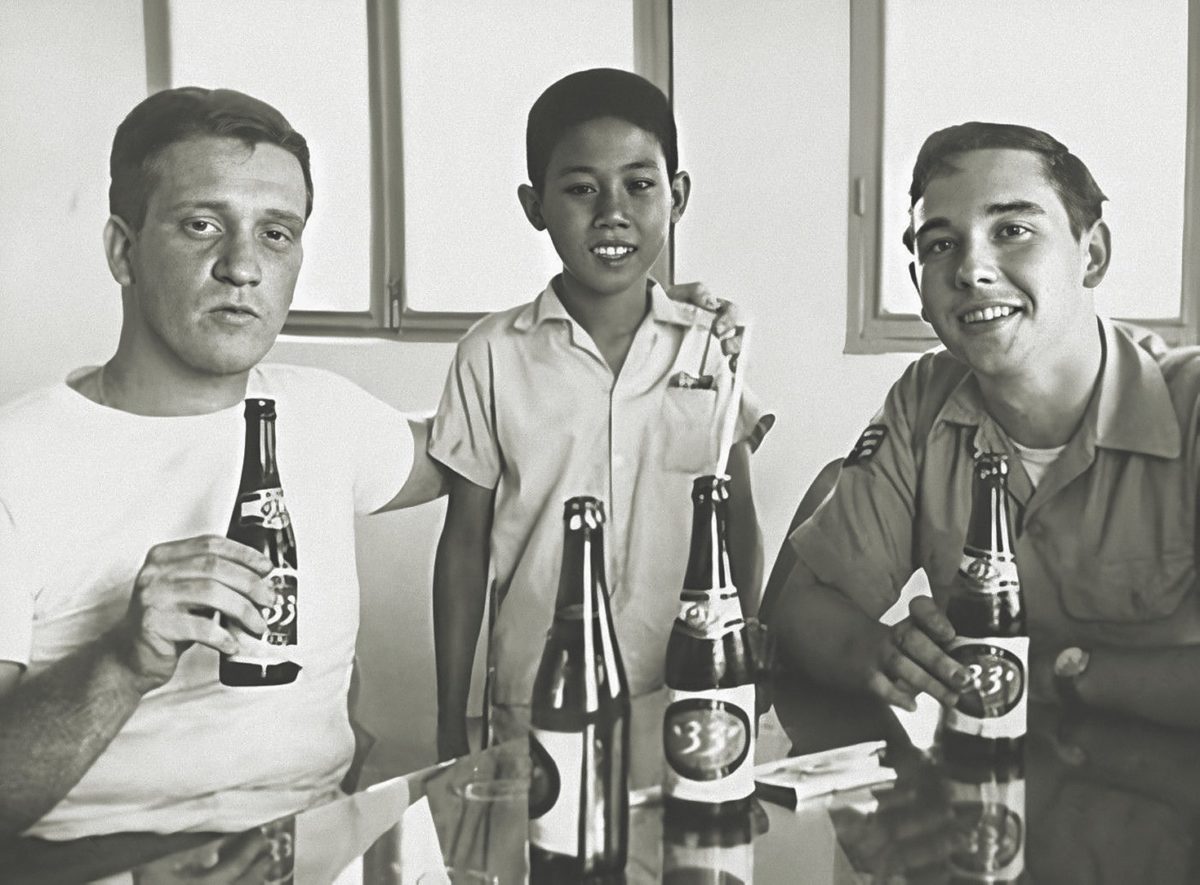While the United States exported a variety of domestic beers to South Vietnam during the war, including Pabst Blue Ribbon, Schlitz and Budweiser, two local varieties — 33 Beer and Tiger Beer — were cheaper and always available if American brands could not be found.
Many U.S. service members discovered that the Vietnamese beers varied in taste from batch to batch, sometimes having particularly bitter notes, a vinegar aftertaste or an odor reminiscent of formaldehyde, a chemical used in building materials, industrial disinfectants and preservatives for funeral homes and medical labs.
The popular 1987 comedy “Good Morning, Vietnam,” starring Robin Williams, contained a reference to the use of formaldehyde, further cementing the rumor in popular memory. Despite widespread speculation that 33 Beer and Tiger Beer contained formaldehyde, there is no evidence to support that belief. Micro amounts of formaldehyde are created in the fermentation process during brewing, which applies to all beers everywhere, but that natural process is different from adding formaldehyde as a preserving agent.
The popular 33 Beer (Ba Muoi Ba means “three-10-three” in Vietnamese) originated in France (Bière 33) using a German recipe in the late 19th century. The label “33” referred to the original 33-centiliter (11.2-ounce) bottle that the brand used. France established a brewery in Saigon during the early 20th century, and production continued when South Vietnam became an independent nation.
The other staple lager in southern Vietnam was first brewed in Saigon in 1909 by Frenchman Victor Larue. It was officially named Bière Larue but was more commonly called Tiger Beer after the image on the label.
Both brands retained their original brewing recipe and manufacturing process in the 1960s and ’70s. Inconsistent storage conditions (including excessive exposure to light and heat), plus occasional problems with raw materials (malts, hops, etc.) sometimes led to differences in quality from batch to batch.
A few other bits of wartime beer trivia: American canned beers exported to Vietnam were not made with the then-relatively new “pop-top” opener. The troops needed a “church key” can opener or other sharp implement to puncture the lid. The two Vietnamese beers had slightly more alcohol content than their American counterparts — around 5.5 percent versus a range of 3.2 to 5 percent. Like Budweiser but unlike most other U.S. brands of the era, Vietnamese beers used fermented rice in the brewing process.
In 1975, after the war, the Vietnamese government changed the name Ba Muoi Ba to Ba Ba Ba (“three-three-three”) to distance the brand from associations with French colonial rule. Now produced as 333 Premium Export Beer by Sabeco Brewery in Vietnam, it is still one of country’s most popular beers.
Bière Larue continues to be produced by Vietnam Brewery Ltd. and should not be confused with the Singapore brand Tiger Beer, sold by the same company. Both 333 and Bière Larue remain lagers, but their recipes have changed since the Vietnam War to accommodate modern and more international tastes.
Dr. Erik Villard is a Vietnam War specialist at the U.S. Army Center of Military History at Fort McNair in Washington D.C.
This article appeared in the June 2022 issue of Vietnam magazine.
historynet magazines
Our 9 best-selling history titles feature in-depth storytelling and iconic imagery to engage and inform on the people, the wars, and the events that shaped America and the world.







